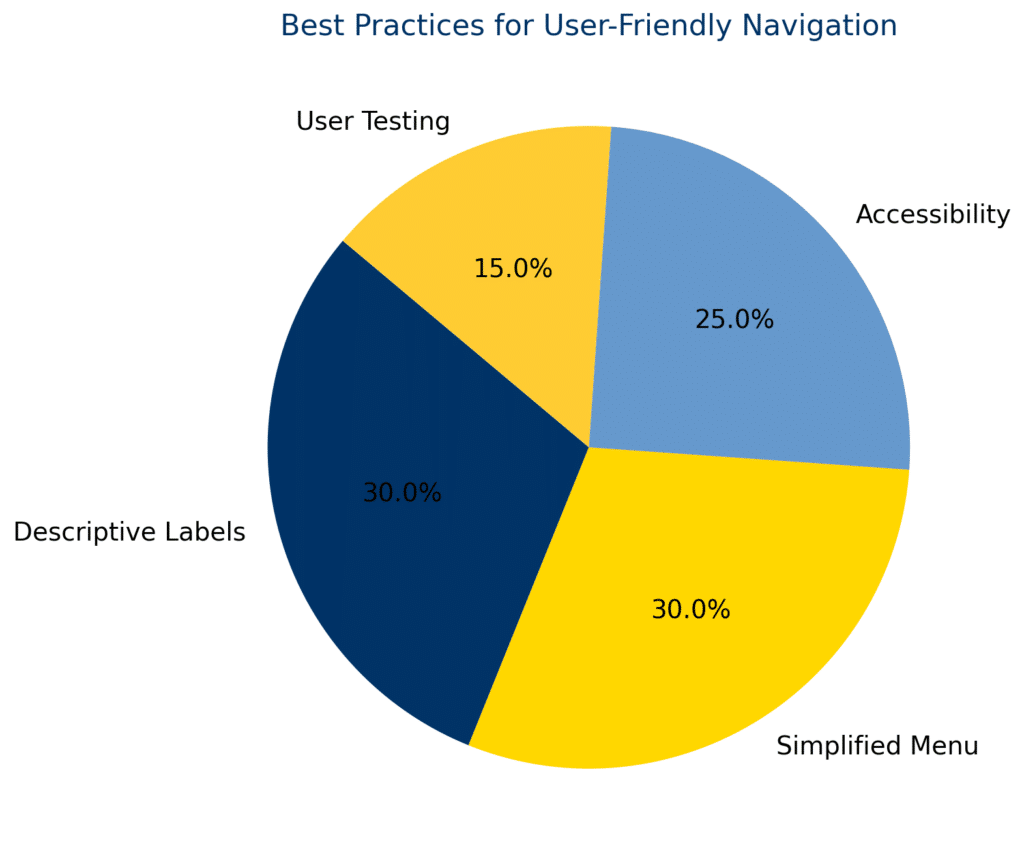Overcoming Implicit Biases: 2024 Design Trends for Cleaning Websites
In the digital age, first impressions are everything—especially for cleaning businesses. A potential client’s first encounter with your website can make or break their decision to engage with your services. But there’s more at play than just having a visually appealing site.
The design of your website subtly influences how visitors perceive your business, often in ways we might not immediately recognize. This is where the concept of implicit biases comes into play. These subconscious biases can shape the way users interact with your site and, ultimately, how they view your business.
As we move into 2024, it’s more crucial than ever to address these biases head-on. By understanding and implementing the latest design trends, cleaning businesses can create websites that not only look great but also foster inclusivity and fairness. In this blog, we’ll explore the top design trends for cleaning websites in 2024 and discuss how these trends can help overcome implicit biases, leading to a more welcoming and engaging online presence for all visitors.
For more insights on how to ensure your website appeals to a diverse audience, check out our guide on refining website clarity. Additionally, if you’re interested in how color psychology can play a role in reducing biases on your site, take a look at our article on color psychology in cleaning service websites.
Section 2: Minimalist and Neutral Aesthetics
Trend Overview: Minimalist Design in 2024
- Simplicity is Key: The trend toward minimalist design continues to grow in 2024, focusing on simplicity, clarity, and functionality.
- Less is More: Minimalist design emphasizes clean lines, ample white space, and a limited color palette, creating a calm and professional atmosphere.
- Focus on Essentials: This approach strips away unnecessary elements, allowing the core message and services of your cleaning business to shine.
Addressing Bias: The Power of Neutral Design
- Avoiding Stereotypes: By focusing on neutral and simple design elements, your website can steer clear of imagery or themes that may inadvertently reinforce stereotypes or biases.
- Inclusive Appeal: A neutral design ensures that your website appeals to a broad audience, regardless of their background, by avoiding overly specific cultural or demographic cues.
- Equal Representation: Neutral aesthetics can help present your cleaning business as inclusive and welcoming to all potential clients, fostering a more positive first impression.
Practical Tips: Implementing Minimalist Design on Your Cleaning Website
Choose a Simple Color Palette:
- Stick to 2-3 neutral colors (e.g., white, gray, soft blues) that create a clean and calming environment.
- Avoid using bold or bright colors that might distract or evoke unintended associations.
- For more insights on color choices, check out our article on color psychology in cleaning service websites.
Streamline Your Layout:
- Use ample white space to separate sections and reduce visual clutter.
- Focus on clear, concise navigation with straightforward menus and well-defined categories.
Limit Visual Elements:
- Select images and icons that are essential and relevant to your content, avoiding excessive or decorative visuals.
- Ensure that all visuals align with the neutral tone of your site, avoiding any imagery that could be interpreted as biased.
Prioritize Readability:
- Use clean, sans-serif fonts that are easy to read and enhance the overall clarity of your site.
- Keep text blocks short and to the point, making your content digestible and accessible.
- Learn more about improving clarity in our guide on refining website content for better user experience.
Enhance User Experience:
- Focus on fast load times by minimizing heavy graphics and complex animations.
- Ensure that your design is mobile-friendly, maintaining the minimalist aesthetic across all devices.
By embracing minimalist and neutral aesthetics, your cleaning website can create an inviting, professional, and bias-free environment that resonates with a diverse audience.
Evaluate Your Website's Minimalist Design
Color Scheme
Layout Complexity
Visual Elements
Section 3: Inclusive Imagery and Visuals
Trend Overview: The Rise of Inclusive Imagery
- Why It Matters: In 2024, the importance of using diverse and inclusive imagery in website design is more significant than ever. People want to see themselves reflected in the businesses they choose to engage with, and this starts with the images you use on your website.
- Building Connections: Inclusive imagery helps to create a connection with a wider audience by showing that your business values diversity and is welcoming to everyone.
Addressing Bias: Choosing the Right Images
- Diverse Representation: To ensure your website appeals to a broad audience, it’s crucial to select images that represent a wide range of ethnicities, ages, genders, and abilities.
- Avoid Stereotypes: Steer clear of images that reinforce stereotypes. Instead, choose visuals that portray people in a variety of roles and settings.
- Balance is Key: Make sure your imagery reflects the diversity of the world around us. This includes not just race and gender, but also different body types, ages, and abilities.
Practical Tips: Sourcing and Maintaining Inclusive Imagery
Where to Find Inclusive Images:
- Stock Photo Websites: Use stock photo sites that specialize in diverse imagery, such as Nappy, TONL, or Pexels‘ diversity collection.
- Custom Photography: If your budget allows, consider hiring a photographer to create custom images that truly reflect the diversity of your team and clients.
- User-Generated Content: Encourage your clients or employees to share their photos. This not only adds authenticity but also highlights real people connected to your business.
Conducting Regular Image Audits:
- Set a Schedule: Regularly review your website’s imagery—every six months, for example—to ensure it remains diverse and inclusive.
- Create a Checklist: Develop a checklist to evaluate your images. Look for representation across different demographics, and ensure no single group is overrepresented or stereotyped.
- Update as Needed: As your audience evolves, so should your imagery. Stay flexible and update your visuals to reflect the current diversity of your audience and community.
By focusing on inclusive imagery, your website will not only resonate with a more diverse audience but also reflect your commitment to diversity and inclusion, making your business more relatable and welcoming to everyone. For more tips on enhancing your site’s overall user experience, check out our article on how to enhance user experience for cleaning service websites.
How Inclusive Is Your Website's Imagery?
Diversity in Representation
Authenticity of Images
Alignment with Target Audience
Section 4: User-Friendly Navigation for All Audiences
Trend Overview: Making Navigation Easy for Everyone
- Why It Matters: In 2024, creating websites with intuitive, user-friendly navigation is more important than ever. Your cleaning website should be easy to use for everyone, whether they’re tech-savvy or not. This means designing a site that guides visitors smoothly from one section to another without confusion.
- Inclusive Design: The goal is to create a website that caters to all users, regardless of their background, age, or familiarity with technology. When navigation is simple and clear, more people can easily find the information they need, which can lead to higher engagement and more business.
Addressing Bias: Designing for Accessibility
- Avoiding Assumptions: When designing your website, it’s important not to assume that all users will interact with it in the same way. Some visitors might be very familiar with the web, while others might struggle with more complex layouts.
- Simple and Clear: Keep your navigation simple and straightforward. Use clear labels for menus and buttons, so everyone understands where to click.
- Consistent Design: Make sure the navigation is consistent across all pages, so users don’t get lost or confused. The same menu should be in the same place on every page.
Practical Tips: How to Improve Navigation on Your Cleaning Website
Use Descriptive Labels:
- Instead of vague terms like “Services” or “Products,” use specific labels like “Commercial Cleaning Services” or “Janitorial Products.” This helps users know exactly where they’re going.
Simplify Your Menu:
- Keep the main menu simple with a few key options. Avoid overwhelming users with too many choices. Use drop-down menus sparingly and make sure they’re easy to navigate.
Make It Accessible:
- Ensure your website is accessible to people with disabilities. This includes using larger text sizes, high-contrast colors, and keyboard-friendly navigation. You can learn more about this in our article on website accessibility and its impact on marketing success.
Test with Real Users:
- Get feedback from a diverse group of users. Ask people of different ages and tech abilities to navigate your site and provide feedback on what works and what doesn’t. This will help you identify and fix any navigation issues.
By focusing on user-friendly navigation, you can create a website that’s easy to use for everyone. This not only improves the user experience but also makes your cleaning business more accessible to a wider audience, increasing your chances of attracting and retaining customers.
Section 5: Personalized User Experiences
Trend Overview: The Power of Personalization
- Why It Matters: Personalized content is becoming a game-changer in 2024. Tailoring your website to each visitor’s needs can significantly boost engagement and make users feel valued.
Addressing Bias: Custom Experiences for Everyone
- Breaking Down Bias: Personalization helps overcome biases by delivering content that suits each user’s unique preferences, ensuring everyone feels catered to, no matter their background or needs.
Practical Tips: Easy Ways to Personalize Your Cleaning Website
Use Dynamic Content:
- Show different content based on the user’s location, past interactions, or browsing history to make your site more relevant.
Offer User-Specific Recommendations:
- Suggest services or products based on what the visitor has viewed or purchased before, making their experience more personalized.
Leverage Tools:
- Use tools like personalization software or plugins that automatically tailor content to each user, making your website more engaging without much extra effort.
Personalizing your cleaning website not only enhances user experience but also makes your business more inclusive and customer-focused.
Section 6: The Role of Content in Combating Biases
Trend Overview: Crafting Inclusive Content
- Why It Matters: In 2024, the content on your website needs to speak to a diverse audience. Writing that resonates with everyone is key to making all visitors feel welcomed and respected.
Addressing Bias: Writing with Care
- Inclusive and Respectful: Your website copy should be free of stereotypes and assumptions. Focus on using language that is inclusive and respectful to all, regardless of background.
Practical Tips: How to Write for a Diverse Audience
Use Neutral Language:
- Avoid gendered terms or phrases that might exclude certain groups. Opt for neutral language that everyone can relate to.
Be Mindful of Tone:
- Ensure your tone is welcoming and professional, making all visitors feel comfortable and valued.
Focus on Clarity:
- Write clearly and simply to ensure your message is accessible to everyone, including those with different levels of language proficiency.
By crafting inclusive content, you can create a website that truly connects with a wide range of readers, making your cleaning business more welcoming to all.
Conclusion
Creating an inclusive, bias-aware website is essential in 2024. We’ve explored key trends like minimalist design, inclusive imagery, user-friendly navigation, and personalized content—all crucial for making your cleaning business more welcoming to a diverse audience. By adopting these strategies, you’ll not only improve user engagement but also foster long-term trust and loyalty with your clients.
Ready to take the next step? Evaluate your current website design and start implementing these trends to enhance inclusivity and appeal. If you have any questions or need further guidance, feel free to contact us. We’re here to help!



